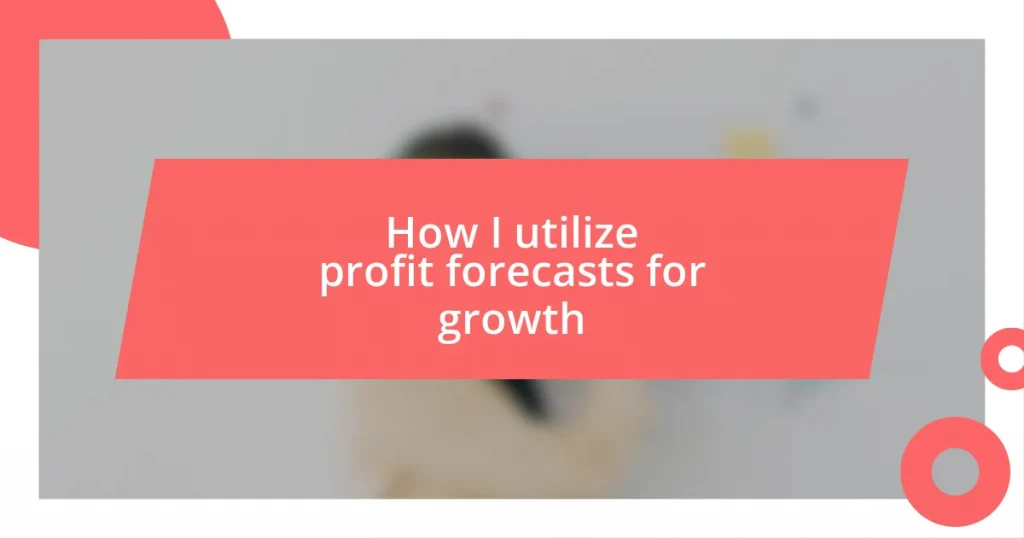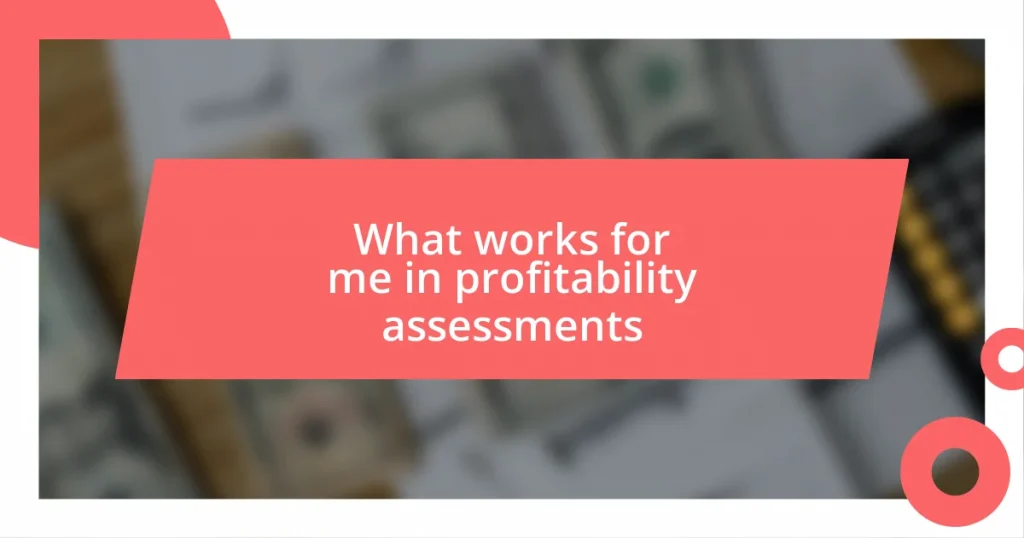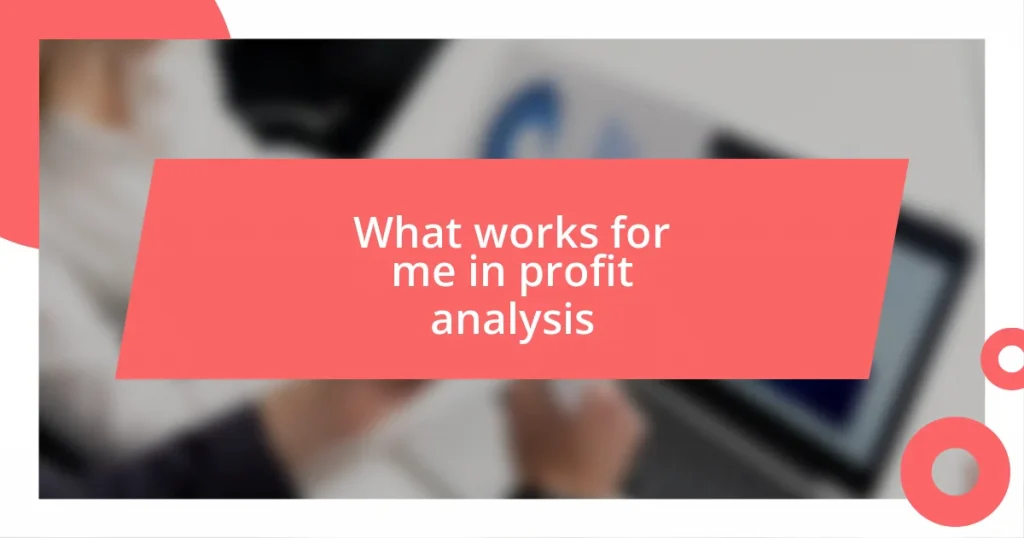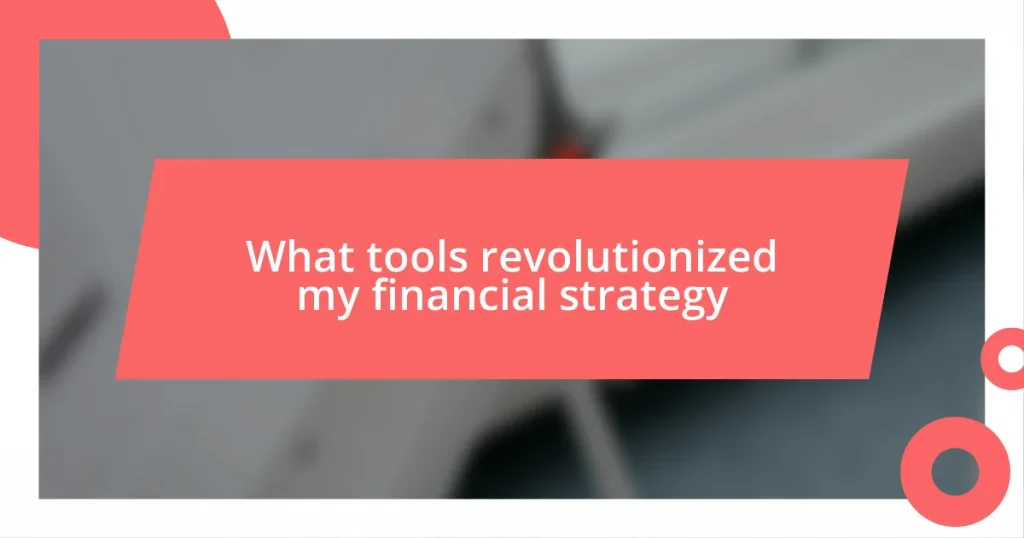Key takeaways:
- Profit forecasts, based on historical data and market trends, help clarify decision-making and strategize effectively to avoid risks.
- Regular analysis of historical financial data and competitive benchmarking reveals patterns and growth opportunities, guiding future strategies.
- Consistent review and adjustment of profit forecasts, incorporating team input, fosters adaptability and can lead to significant improvements in sales and engagement.
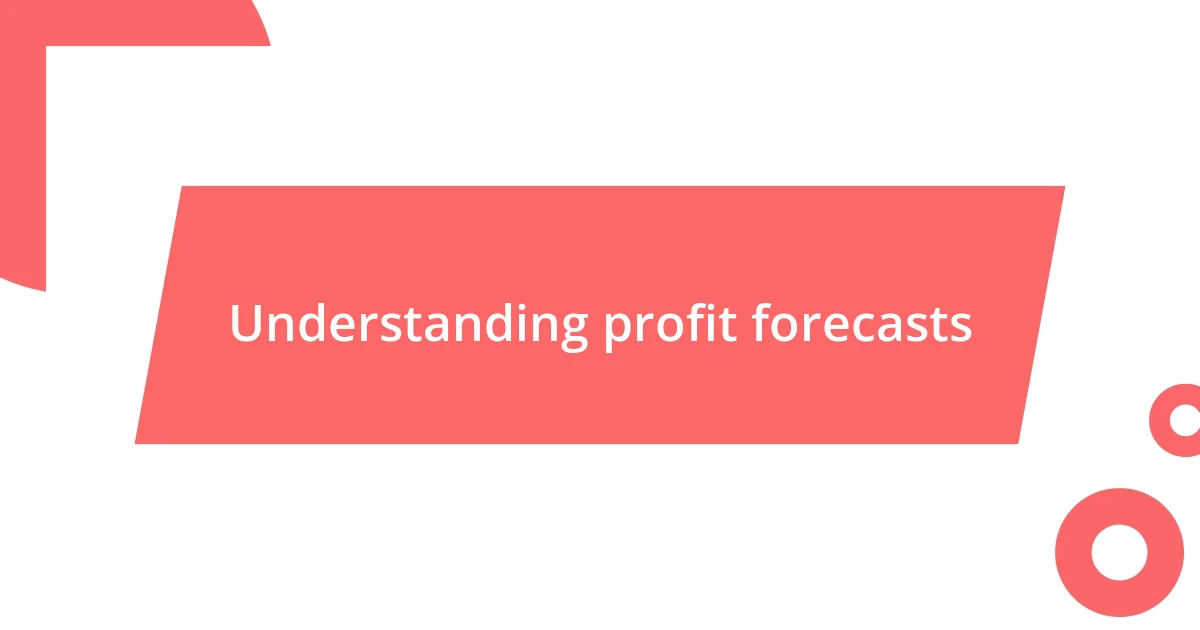
Understanding profit forecasts
Profit forecasts are essentially educated estimates regarding future earnings. I remember my first attempt at creating one; it felt daunting, almost like peering into a crystal ball. But once I realized they’re grounded in historical data and current market trends, the fear began to fade.
What often strikes me is how these forecasts can shape decision-making processes. For instance, when I was faced with a potential investment opportunity, referencing profit forecasts gave me clarity. It’s like having a roadmap; without it, you might find yourself wandering in the dark, unsure of the right direction to take.
Understanding the nuances of profit forecasts requires not just technical knowledge but also a degree of intuition. Have you ever miscalculated your own budget and faced the consequences? In business, a small misjudgment can lead to significant missteps. That’s why analyzing potential profits can illuminate possible pitfalls, allowing me to strategize effectively and avoid unnecessary risks.
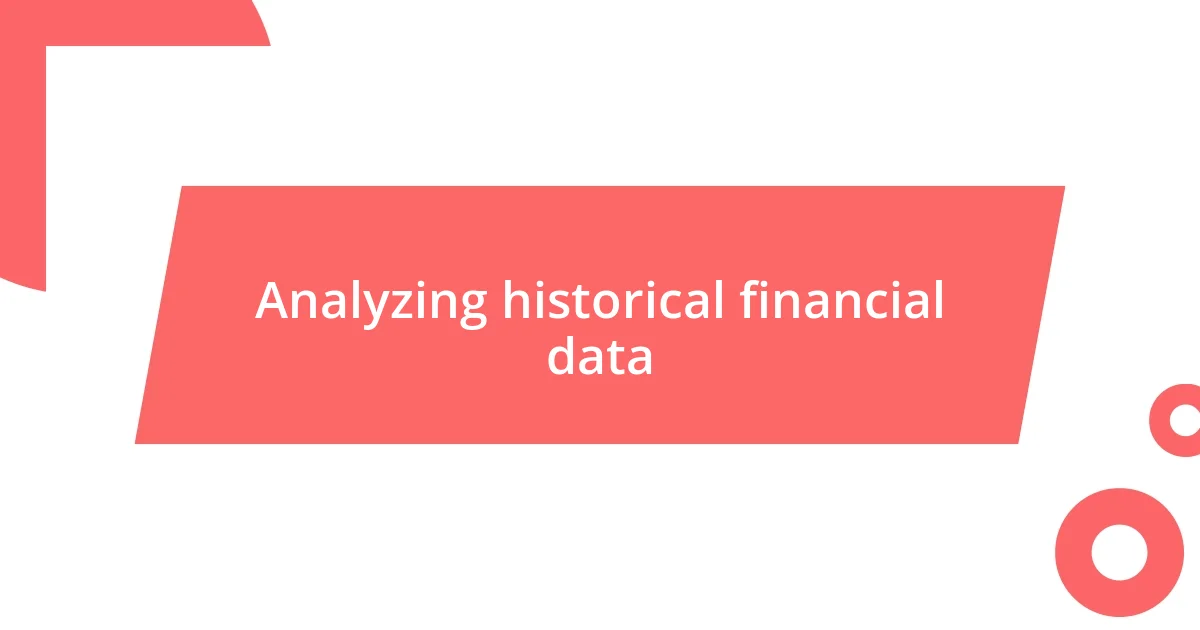
Analyzing historical financial data
Analyzing historical financial data is like getting a backstage pass to the performance of your business over the years. I often dive into previous years’ sales figures, expenses, and profit margins. This information reveals patterns that might not be immediately obvious but can guide future strategies. For instance, when I noticed a decline in sales during specific months repeatedly, it sparked an idea to enhance marketing efforts during those periods to counteract the trend.
Furthermore, I love comparing data across different periods. It’s fascinating how a little fluctuation can tell a story. I remember a time when I was dissecting quarterly reports; I found an upward trend in customer retention. This insight led me to invest more in loyalty programs, capitalizing on a clearly fruitful area. When we understand where we’ve been, it becomes easier to project where we can go next.
Lastly, benchmarking against competitors also plays a crucial role in my analysis. I frequently assess rival performance metrics to identify my business’s strengths and weaknesses. There was a moment when our competitor’s growth rate outpaced ours, which jolted me into action. By analyzing their historical data alongside ours, I identified areas for improvement and drove changes that revitalized our approach almost overnight.
| Aspect | My Data Analysis |
|---|---|
| Trend Identification | Recurring sales decline in off-peak months |
| Growth Opportunities | Invested in loyalty programs after noticing retention rates |
| Competitive Benchmarking | Identified improvement areas by comparing with competitors |
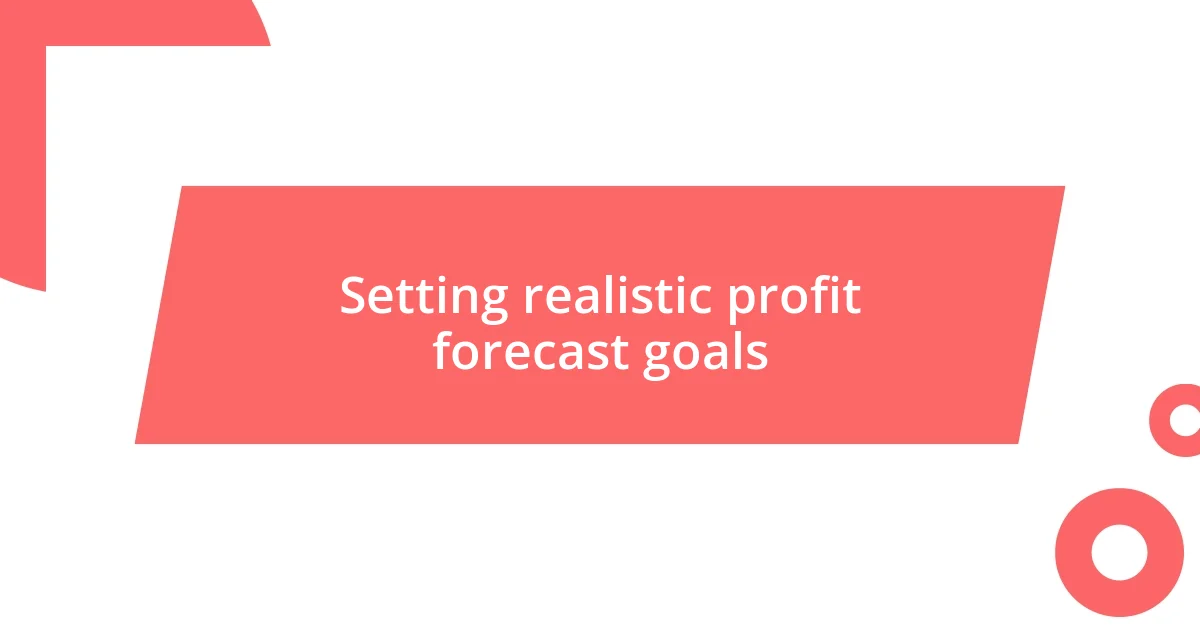
Setting realistic profit forecast goals
Setting realistic profit forecast goals is essential for driving growth in any business. It’s easy to get caught up in ambitious targets, but I’ve learned that setting attainable goals rooted in reality keeps me grounded. For instance, during a particularly optimistic year, I set forecasts based more on hope than data. The end result? A harsh reality check. That experience taught me to always balance my aspirations with a critical look at what’s possible based on my analysis.
When defining profit forecast goals, I focus on several key elements:
- Historical Performance: I refer to past earnings to ground my expectations. It’s enlightening to see what has been achieved, helping to set benchmarks.
- Market Trends: Understanding current market conditions is crucial. I remember missing out on an opportunity by ignoring external factors; now, they play a vital role in my goal-setting.
- Resource Availability: Knowing my operational capacity helps avoid setting goals that my team simply can’t meet.
- Stakeholder Input: Engaging with my team brings diverse perspectives that enhance goal realism. I often find that collaborative discussions lead to adjustments that inspire everyone.
By keeping all these aspects in mind, I ensure my profit forecasts reflect a balanced view of potential and practicality. It’s a careful dance between ambition and realism, and I always strive for that sweet spot that propels me forward without risking burnout.
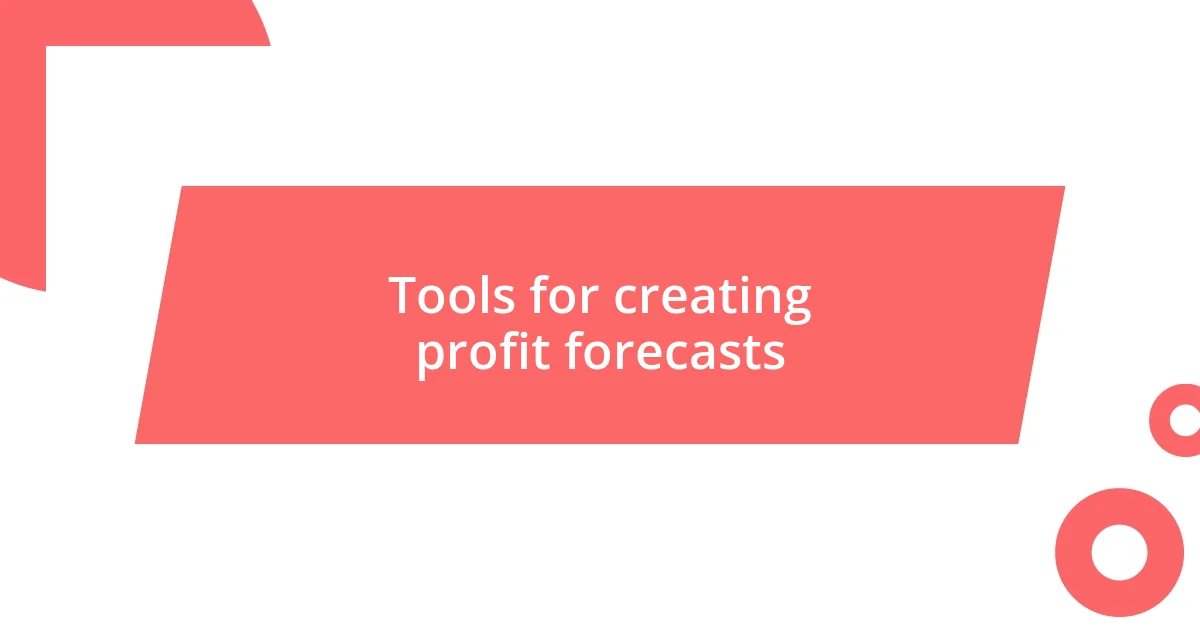
Tools for creating profit forecasts
When I think about tools for creating profit forecasts, I often reflect on how software solutions can streamline the process. For example, I rely heavily on Excel for its flexibility; I can easily create custom formulas to manipulate data in ways that reveal unexpected insights. I have countless spreadsheets that are often a mix of projections and what-if scenarios that help me visualize different outcomes. Ever tried simulating various sales strategies with a quick Excel model? It’s a game changer, providing clarity and confidence in my forecasts.
Another tool I find invaluable is dedicated forecasting software like QuickBooks or Tableau. These platforms not only automate data gathering but also come with powerful analytics features that unveil trends and anomalies in a flash. I’ll never forget the time Tableau helped me discover that our anticipated revenue was drastically underestimated. Those colorful charts and graphs turned an overwhelming amount of data into a visually digestible story. It sparked a shift in strategy that ultimately led to a surprising boost in sales!
I can’t overlook the role of collaboration tools either, such as Slack or Asana. I often gather input from various departments—be it sales, marketing, or finance—to create a comprehensive forecast. Before implementing this approach, I used to feel isolated in my decision-making. Now, the team’s insights often provide a fresh perspective that enriches my forecasts. Have you ever noticed how collective brainstorming can transform a rough idea into a solid plan? Engaging my team not only enhances accuracy but also fuels a sense of ownership and motivation.
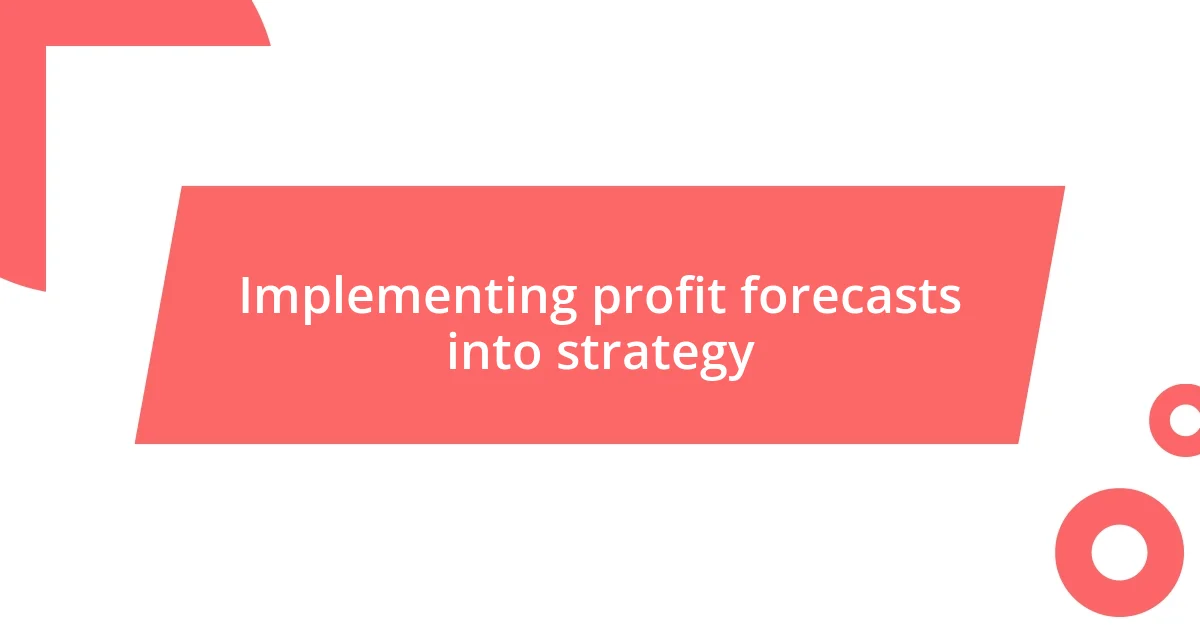
Implementing profit forecasts into strategy
Integrating profit forecasts into my overall strategy involves a delicate balance of intuition and data-driven analysis. I’ve found that aligning forecasts with strategic goals not only sharpens focus but also enhances accountability across the board. One memorable instance was when I revamped our marketing approach based on projected revenue shifts. This preemptive adjustment not only salvaged a potential downturn but actually spurred a collaborative effort that energized the entire team.
By regularly reviewing and tweaking my profit forecasts, I ensure they remain relevant and actionable. I tend to treat these forecasts as living documents rather than static numbers; keeping them updated based on new data or unexpected market changes has often led to surprising opportunities. I vividly recall a time when mid-year adjustments revealed a growing demand for a product I hadn’t fully considered—redirecting resources into its promotion resulted in a 30% increase in quarterly sales!
Incorporating feedback loops into my forecasting process has also proven invaluable. I engage my team in monthly reviews to discuss the forecasts and adjust strategies as necessary. This practice deepens our collective understanding of the market landscape and fosters a culture of responsive adaptation. Have you ever experienced the power of open discussions? I’ve seen firsthand how these conversations can spark innovative ideas that are crucial for leveraging profit forecasts in strategy.
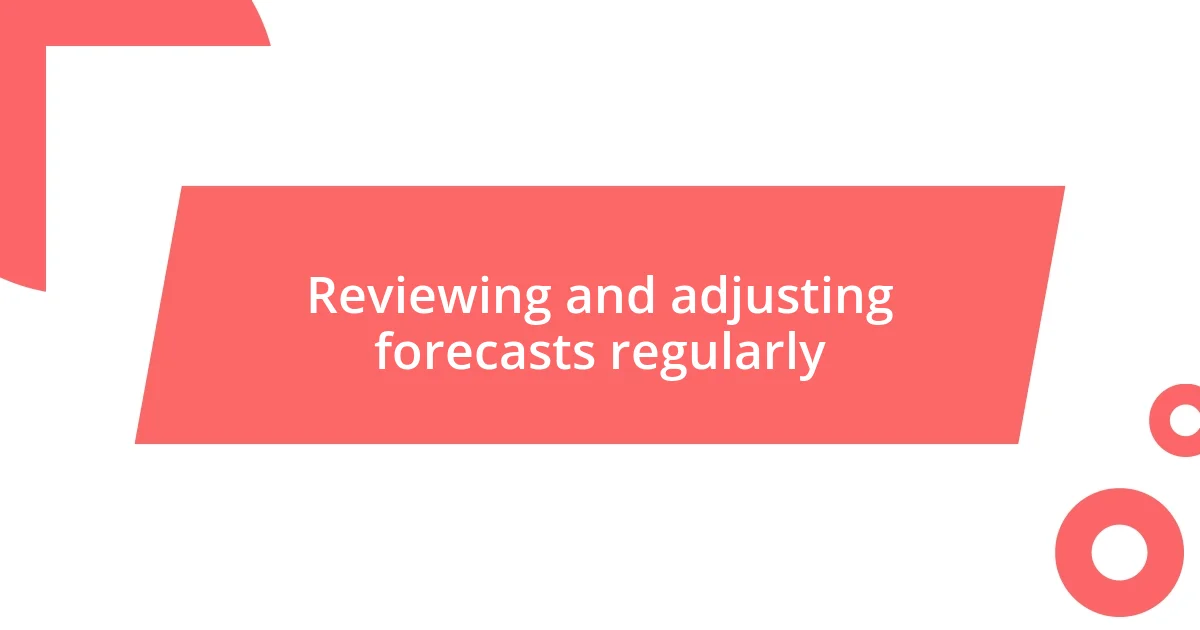
Reviewing and adjusting forecasts regularly
Regularly reviewing and adjusting my profit forecasts is a crucial aspect of my strategy. I make it a habit to sit down each month and dive into the numbers, reflecting on how market dynamics have shifted. I often feel a surge of anticipation during these sessions—what surprises will the data reveal this time? One month, I discovered a subtle uptick in a specific product’s sales that prompted me to increase our inventory ahead of the holiday rush. That decision alone led to a substantial boost in our holiday profits.
I firmly believe that treating forecasts as dynamic tools empowers me to seize opportunities. I’ve learned to embrace an adaptable mindset, recognizing that static forecasts can become outdated in the blink of an eye. Last year, a surprising trend in consumer preferences emerged mid-quarter, and because of my commitment to consistent review, I swiftly adjusted our marketing focus. This willingness to modify our approach resulted in a 20% increase in customer engagement—a rewarding experience that reinforced the value of staying nimble.
Engaging my team during these review sessions opens up a treasure trove of insights. I often ask them how their departments can contribute to updating our forecasts. Encouraging their input fosters a collaborative spirit and can lead to unexpected revelations. I recall one particularly eye-opening meeting where a member of the sales team highlighted an emerging competitor. By incorporating that feedback, we not only adjusted our forecasts but also fine-tuned our strategy to better position ourselves in the market. Isn’t it amazing how a simple conversation can lead to transformative changes?










